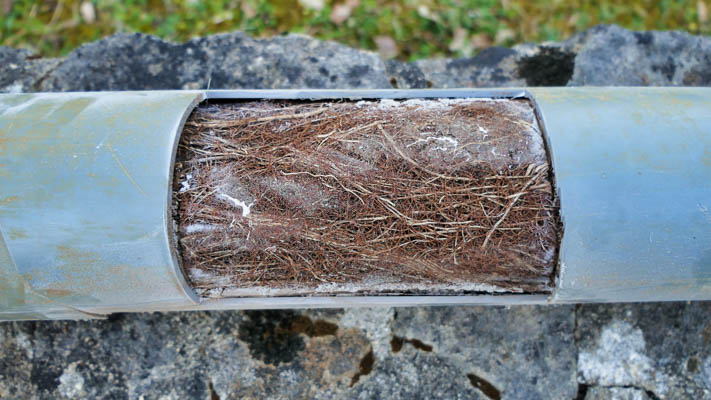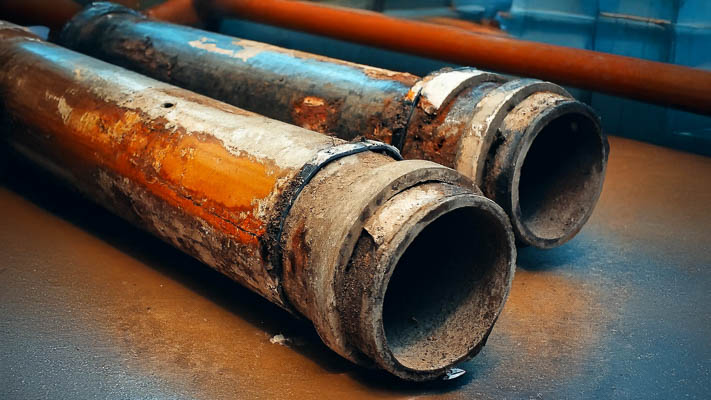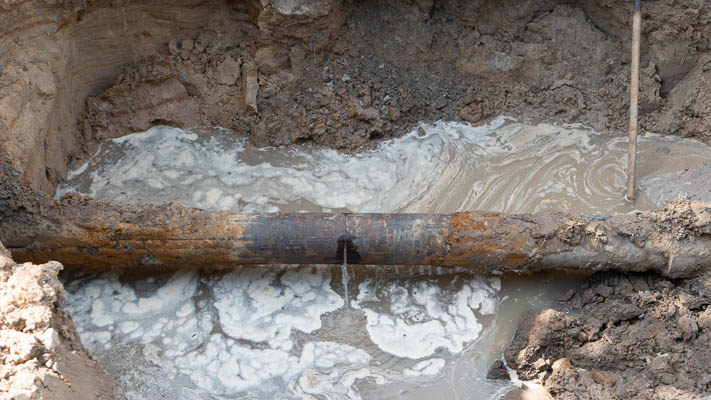What Is Trenchless Sewer Repair?
Trenchless sewer repair is a method of restoring damaged sewer lines without the need for large-scale digging. It's designed to fix issues like cracks, leaks, and root intrusion while preserving your landscaping, driveway, and other outdoor structures.
Unlike traditional sewer repair, which requires extensive excavation to access and replace the damaged pipe, trenchless methods use small access points to repair or replace the pipe from within. This technique is faster, less invasive, and often more cost-effective in the long run.
Trenchless repair is commonly used for:
- Fixing minor to moderate cracks and leaks
- Repairing root-damaged pipes
- Restoring functionality to corroded or weakened pipes
- Replacing old pipes without digging a trench

While trenchless methods are effective in many cases, they aren't suitable for every situation. If a pipe is severely collapsed, misaligned, or beyond repair, a full replacement may be necessary.
We have an article that investigates how to tell whether your home requires a sewer pipe replacement.
How Does Trenchless Sewer Repair Work?
Trenchless sewer repair typically involves one of two main techniques: pipe lining (CIPP) or pipe bursting. Each method offers a solution for different types of sewer damage.
Pipe Lining (CIPP - Cured-in-Place Pipe)
Pipe lining involves inserting a flexible, resin-coated liner into the existing pipe. Once in place, the liner is inflated, pressing the resin against the inner walls of the damaged pipe. After the resin cures and hardens, it forms a new, seamless pipe inside the old one.
This method requires minimal digging, making it a preferred choice for homeowners looking to avoid major disruptions to their property. Additionally, the cured liner creates a durable, corrosion-resistant barrier that seals off small cracks and leaks, effectively restoring the pipe's functionality.
However, pipe lining does have limitations. It is not suitable for pipes that have collapsed or suffered severe structural damage, as the liner requires an existing pipe to mold into.
Additionally, because the liner is installed inside the old pipe, it slightly reduces the pipe's internal diameter. While this reduction is usually minimal, it may impact flow capacity in already narrow pipes.
Pipe Bursting
Pipe bursting is a method used when a sewer pipe is too damaged for relining. It involves pulling a new pipe through the existing one while simultaneously breaking apart the old pipe.
As the old pipe fragments, the new pipe takes its place without requiring a large trench. This technique allows for a complete pipe replacement without the need for extensive excavation, making it a long-lasting and effective solution for severely damaged pipes.
The primary benefit of pipe bursting is that it completely replaces the old pipe, eliminating issues related to corrosion, cracks, and root intrusion. Since the new pipe is made of durable materials like PVC or HDPE, it offers enhanced longevity and resistance to common sewer line problems. However, pipe bursting requires access points at both ends of the pipe, which may not be feasible on all properties. Additionally, if the old pipe has major misalignment or shifts due to soil movement, pipe bursting may not work as efficiently.
Both methods avoid the need for major excavation, making them attractive options for homeowners looking to minimize property disruption.
Can Trenchless Sewer Repair Fix All Types of Pipe Damage?
Trenchless sewer repair is an effective method for restoring sewer pipes, but it does have limitations. Whether it's the right solution depends on the severity and type of pipe damage to your home's sewer lines.
For minor to moderate pipe issues, trenchless repair is often an excellent choice. If your sewer line has small cracks, leaks, root intrusions, or corrosion, pipe lining can reinforce the existing pipe and prevent further deterioration. This method effectively seals off damage and provides a smooth, long-lasting interior surface that improves flow and prevents future buildup.
For pipes that have suffered significant structural damage, pipe bursting may be the more suitable trenchless option. This process replaces an old or failing pipe with a brand-new one, eliminating issues like large breaks, excessive corrosion, and long-term root invasion.

However, if the pipe has collapsed entirely, has severe misalignment, or is made from outdated materials like Orangeburg or heavily corroded cast iron, trenchless repair may not be feasible. In such cases, full sewer replacement is typically the best option for long-term reliability.
Understanding the condition of your pipes will help you make an informed decision that ensures a reliable and lasting solution for your home's plumbing system.
Get your free estimate today
With over 75,000 repipes completed, we've perfected our One-Stop Repipe™ for your home.
Is Trenchless Sewer Repair a Temporary Fix or a Long-Term Solution?
Although trenchless sewer repair is a less intrusive solution, its effectiveness depends on the condition of the existing pipe and the severity of the damage.
Trenchless repair can last many years, providing a reliable seal that prevents future leaks and root intrusion, making it a long-term investment for homeowners who want to address the symptoms of the damage.
However, if a sewer line has extensive damage, full replacement with PVC (and sometimes ABS) piping is often the better long-term investment as it addresses the root cause directly. New pipes eliminate the risks of recurring issues, ensuring a fully functional and reliable sewer system for decades.
When deciding between trenchless repair and full replacement, consider:
- The extent of pipe damage (localized vs. widespread)
- The age of your sewer system (older pipes may need full replacement)
- The risk of future problems (are there recurring issues?)
We also have an article that breaks down in detail the factors to consider when deciding between sewer relining and replacement.
If your sewer line has multiple problem areas, a complete replacement may save you from costly repairs down the road. Although we don't reline sewer or drain lines, when it comes to outbound waste lines, we always recommend a complete repipe, typically with PVC unless local regulations require ABS.
If you have any questions about repiping your home's drains or sewer pipes, feel free to contact us to have one of our local repipe consultants provide a consultation and quote, delivered in-home or remotely.
Receive a Quote for Sewer Pipe Replacement
Here at Repipe Specialists, we continually get positive customer feedback from customers about their overall home repipe experiences. We often exceed their expectations on:
- Speed: Our repipe crews typically complete a repipe in a day, returning on another day for wall patching.
- Convenience: Through our One-Stop Repipe™ Process, we handle everything from permits, to wall patching, to inspections.
- Cleanliness: Our crews are trained to protect your home while working (we cover all surfaces with protective sheeting), and to clean up fully at the end of each day.
- Peace of Mind: Repipe Specialists is a fully licensed plumber in every state we operate in, and we back all of our repipes with a lifetime warranty.
- Financing programs: To help take the sting out of unplanned repipe expenses, we offer several financing programs.
- Price: As a specialist that performs hundreds of repipes a week, we can deliver high-quality repipes at a lower cost vs generalist plumbers. We have an article that covers repipe cost factors in detail.
Schedule a free in-home consult, and one of our local repipe consultants will explain all your replacement options and provide you with a written, fixed-price quote.

